Habitats: Sun bear range can be divided into two ecologically distinct regions, divided at the Isthmus of Kra in southern Thailand (10°30’ N). In the Indochinese bioregion north of the isthmus, sun bears live in a seasonal climate with distinct rainy and dry seasons. Forests here are a mixture of semi-evergreen, mixed deciduous, dry dipterocarp, and montane evergreen. In the Sundaic region south of the isthmus (Peninsular Malaysia, Sumatra, and Borneo), the climate is aseasonal, with high annual rainfall that is relatively evenly distributed throughout the year. Sun bear habitats in this region include hill dipterocarp forest, peat swamp, freshwater swamp, limestone/karst hills, lower to sub-montane forest, and mangrove swamps.
Sun bears use habitats that provide foods and shelter. Primary (unlogged) forests can provide a high diversity of fruits, but fruits are not always available. The dipterocarp rainforests of the Sundaic region experience synchronized fruit-masting events, followed by inter-mast periods of 2–9 years with little fruiting. During inter-masting periods, sun bears rely largely on insects, which may be more plentiful in regenerating logged forests with extensive woody debris and forest openings. Hence, whereas sun bears avoid newly-logged forests, they take advantage of regenerating forests, after about a decade post-logging (depending on the kind of logging and extent of regeneration).
Sun bears also take advantage of some kinds of plantations that provide foods. For example, whereas conversion of forest to oil palm plantation is one of the greatest overall threats to sun bears, they will forage on oil palm fruits, and those doing so tend to be heavier than sun bears living entirely on natural foods. However, they feed only at night and only near the edge of a large oil palm plantation, and return to the safety and cooler shade of an adjoining forest by day.
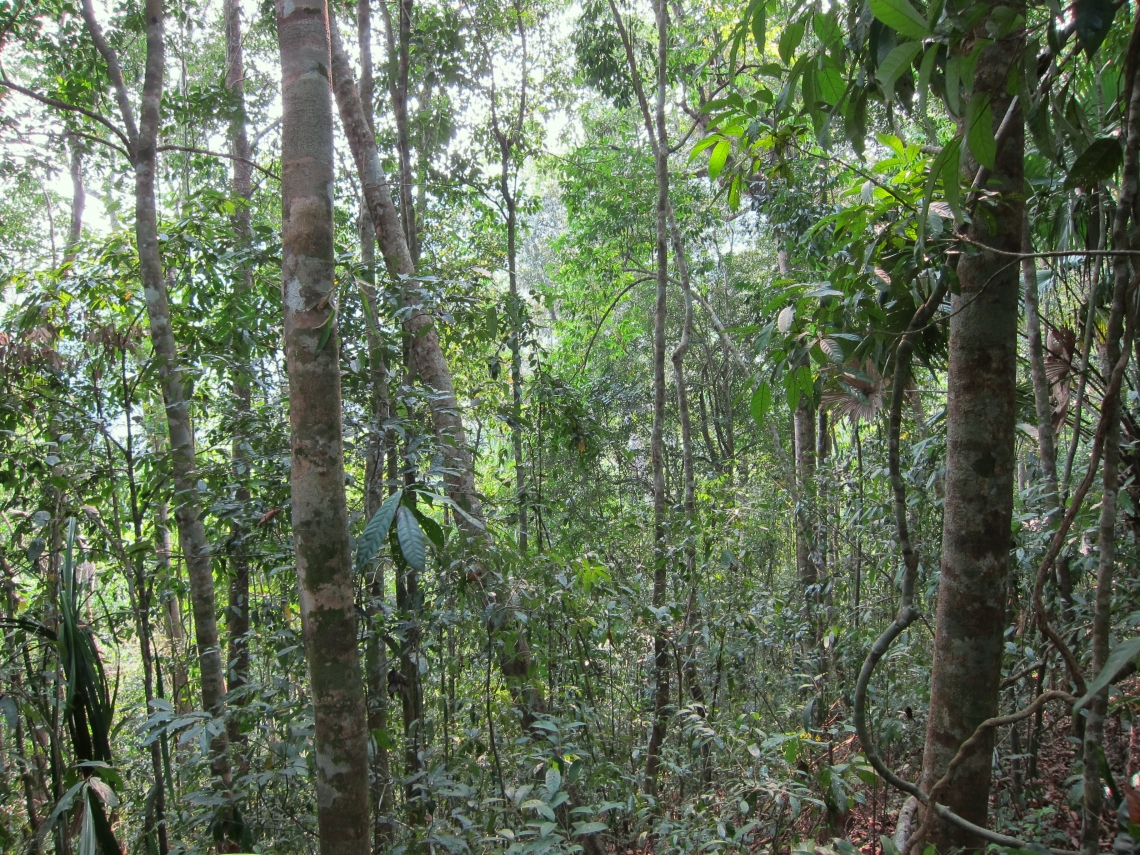
Sun bear_H malayanus_Lao PDR_ diverse forest habitat_D Garshelis
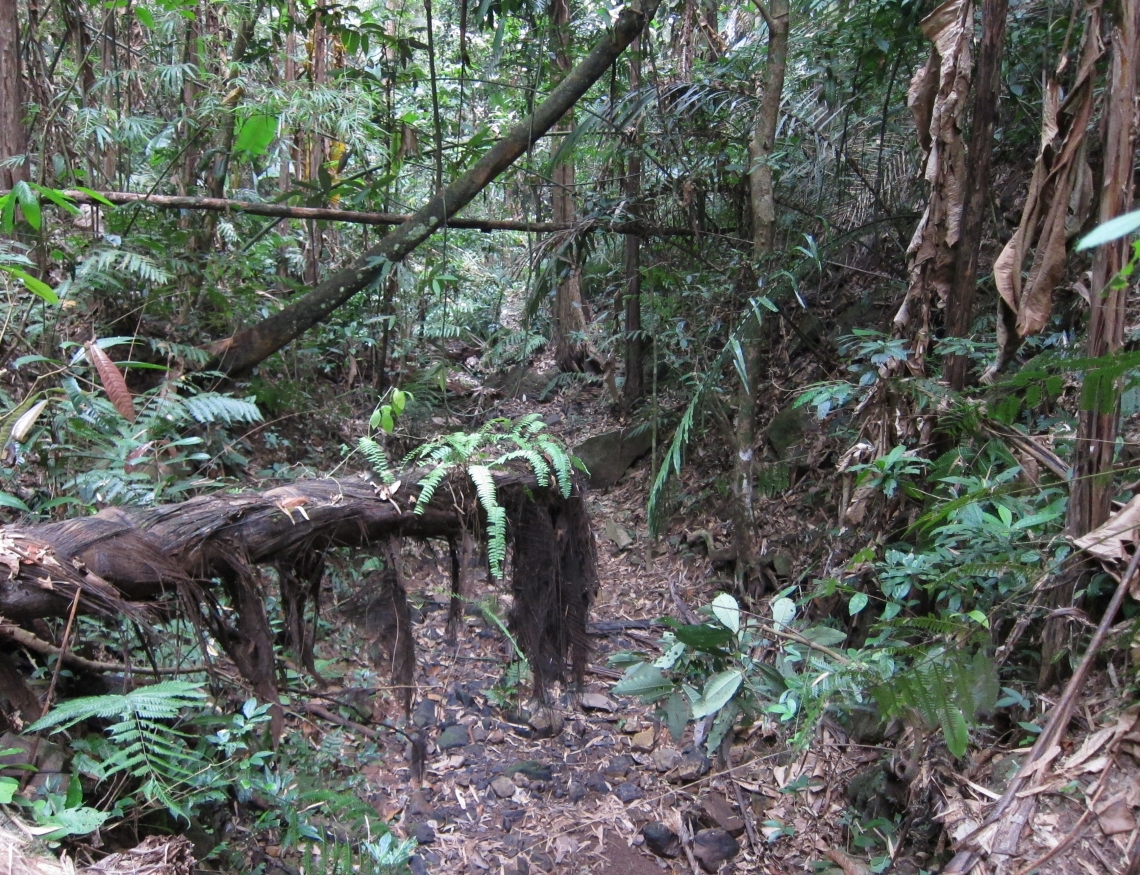
Sun bear_H malayanus_Lao PDR_dry riverbed_D Garshelis
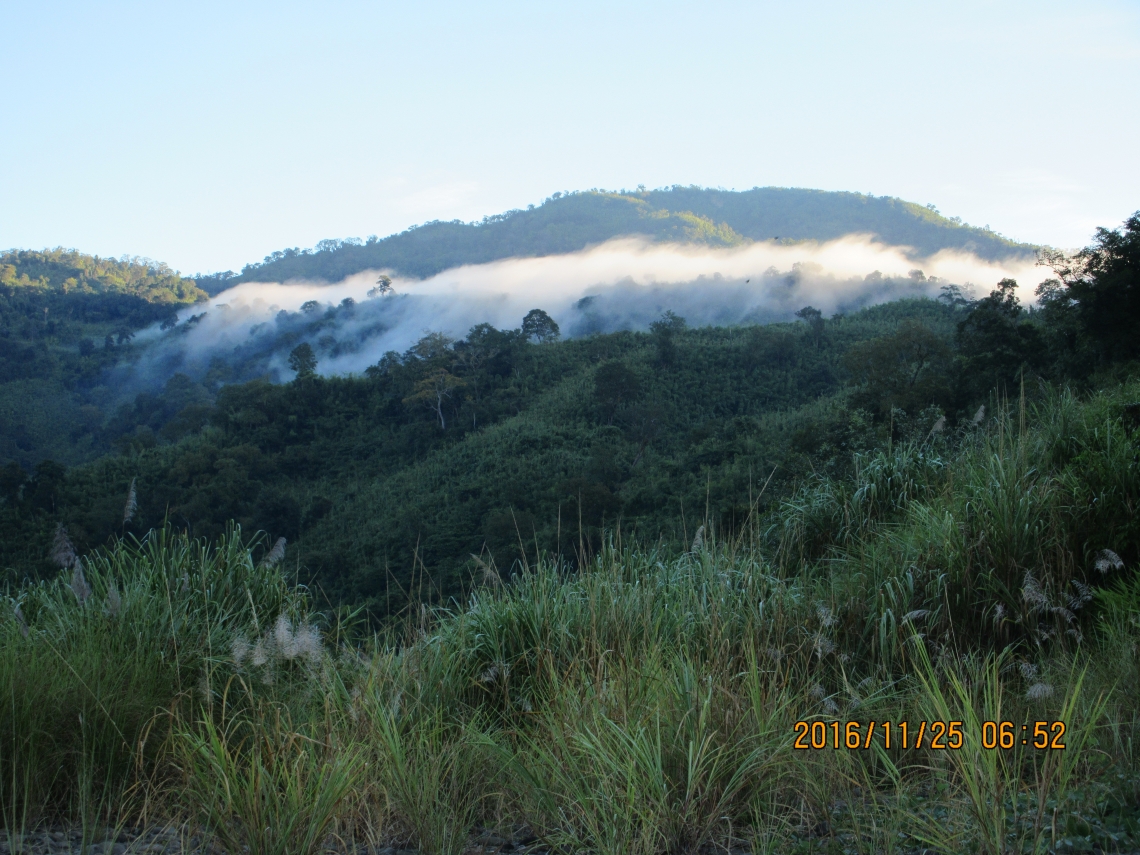
Sun bear_H malayanus_Myanmar_forest mix_L Gaffi
Diet: Sun bears are generalist omnivores. They are well-known for feeding in fruiting trees, and utilize an extraordinary diversity of fruits (e.g., 90–115 species within 30–42 families in a single area). In Bornean lowland forests, fruits of the families Moraceae, Burseraceae and Myrtaceae make up more than 50% of the fruit diet, whereas in Thailand fruits of Lauraceae, Fagaceae, Leguminosae, Labiatae, and Sapindaceae are the most commonly consumed. Figs are an especially key nutritional resource in both regions because they are often available when other fruits are not. Occasionally, growth shoots of certain palms and some species of flowers are consumed, but otherwise vegetative matter is rarely eaten. Often underappreciated is sun bears’ use of insects, especially termites, ants, beetle larvae, and stingless bee larvae and honey, which can make up a substantial portion of their diet. The Indonesian name for sun bear (beruang madu) translates to ‘honey bear’, probably stemming from the conspicuous chewed-out holes in large trees resulting from their feeding on bees’ nests. Their especially long tongue and massive jaw muscles and canines are particular adaptations for extracting these bees’ nests inside hollow trees, as well as feeding other insects in crevices in wood. Their long sharp claws enable them to dig easily into the ground and break into rotting logs. Sun bears living near forest edges also feed in plantations of sugar palm, oil palm, and they will raid cultivated fruit trees such as coconut, apple, durian, banana, jackfruit, and snakefruit. Other crops eaten by sun bears include pineapple, sweetcorn, cucumber, pumpkin, sesame, and maize. Very rarely, sun bears also eat livestock such as goats and chickens.
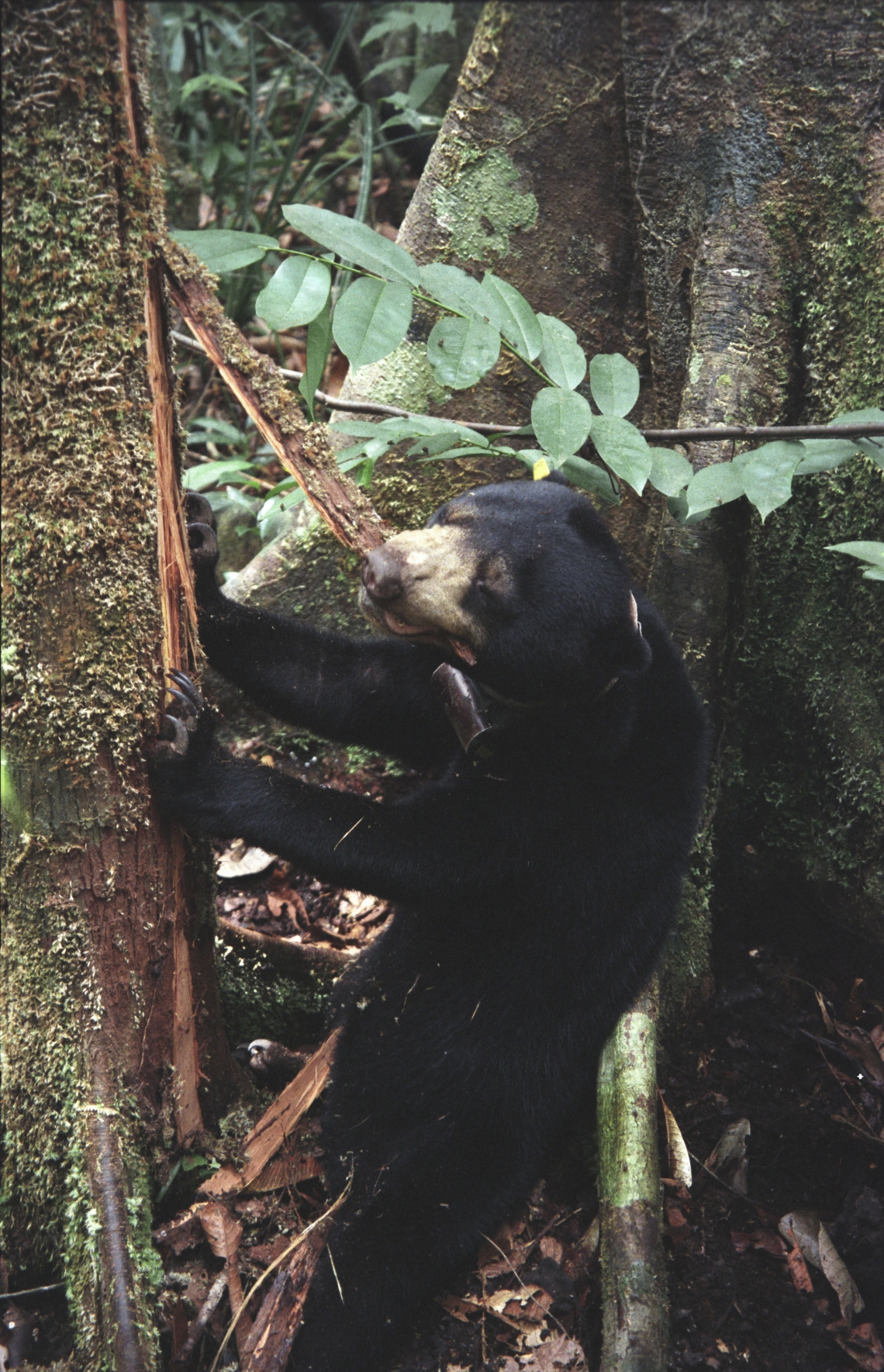
Sun bear_H malayanus_Kalimantan Indonesia_Breaking into stingless bees nest_G Fredriksson
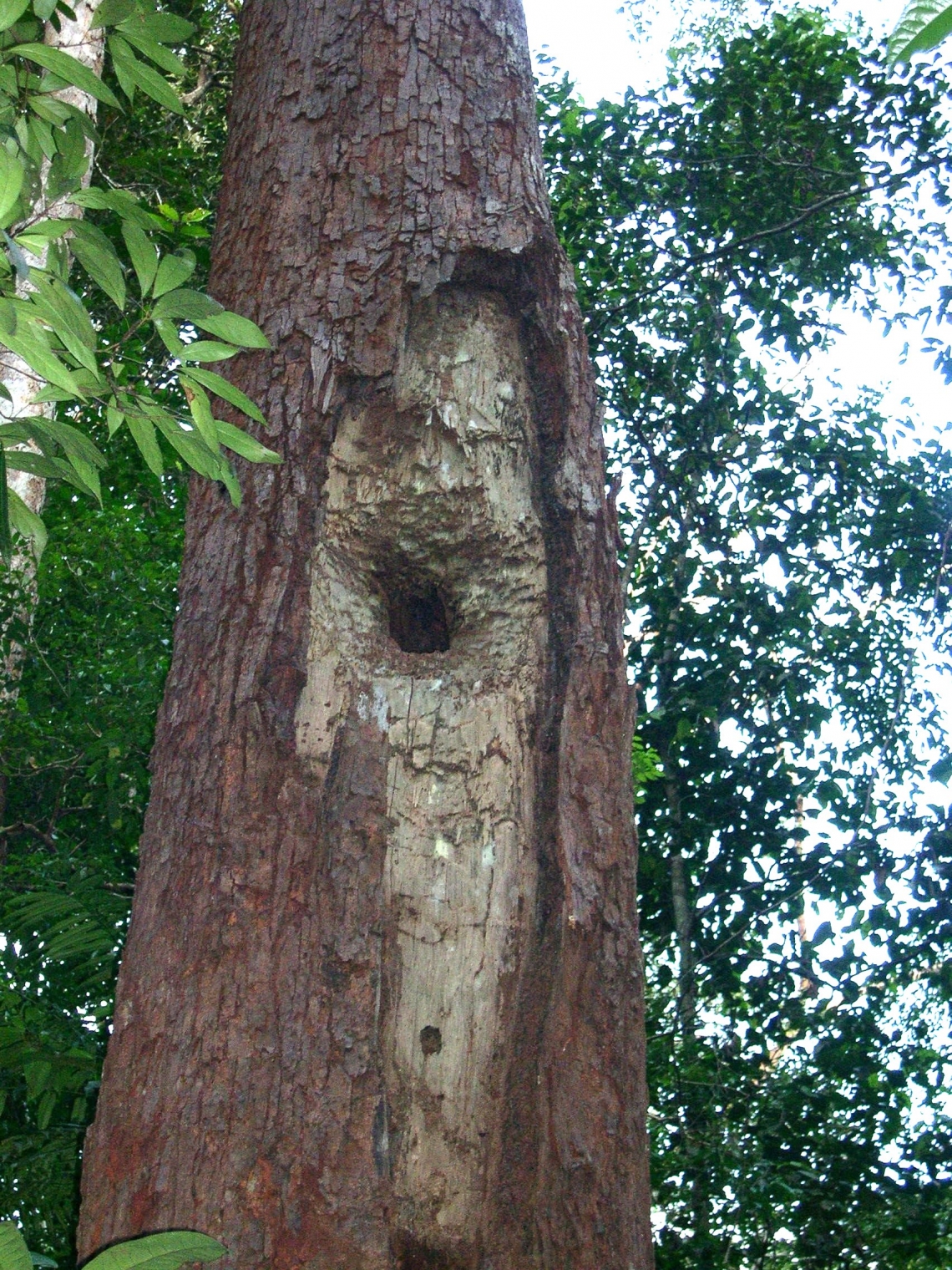
Sun bear_H malayanus_Kalimantan Indonesia_Sign of feeding on stingless bees nest_G Fredriksson
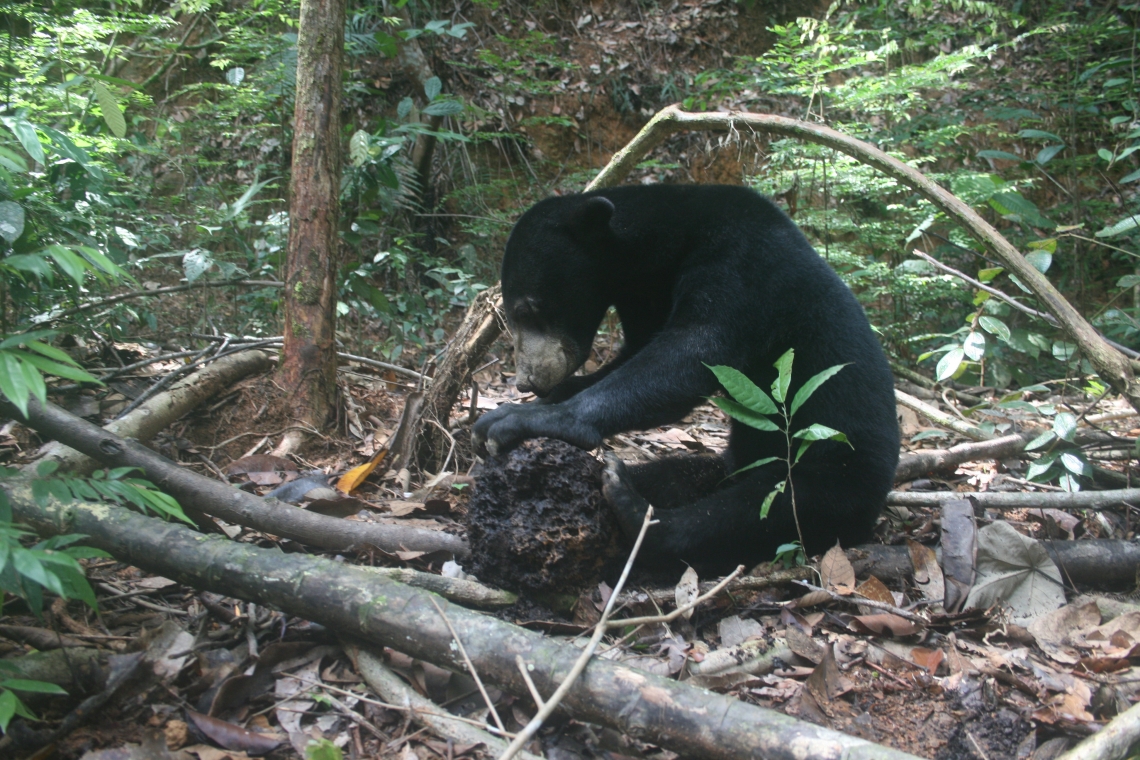
Sun bear_H malayanus_Kalimantan Indonesia_Feeding on Discuspiditermes termites_G Fredriksson
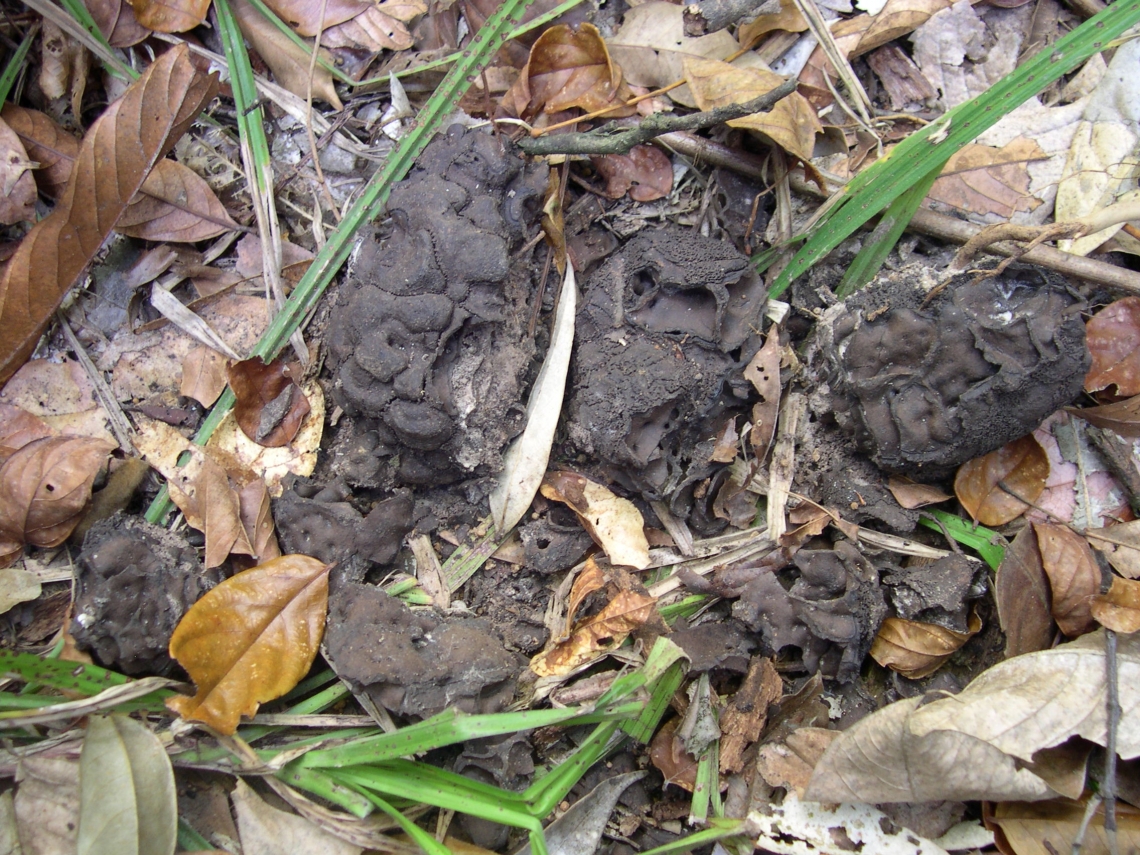
Sun bear_H malayanus_Kalimantan Indonesia_Broken underground Prohamitermes termite nest main food of sun bear in Kalimantan_G Fredriksson
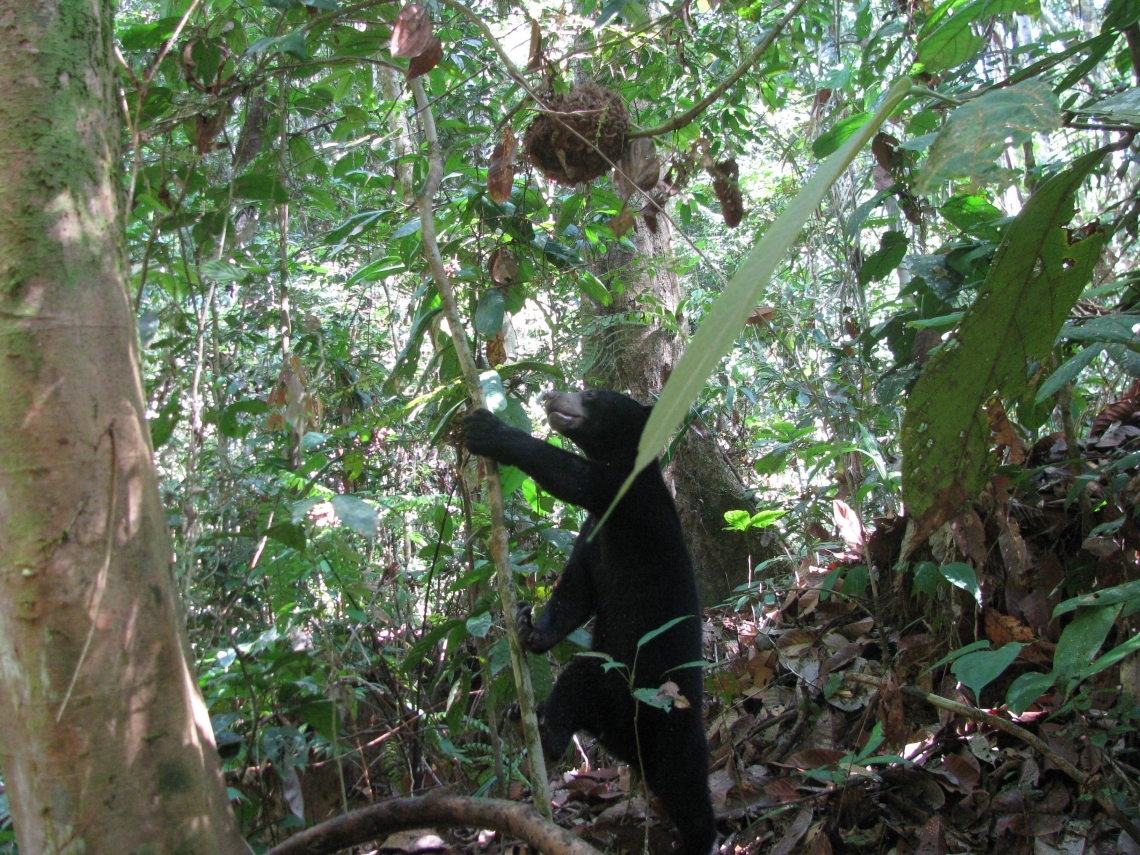
Sun bear_H malayanus_Kalimantan Indonesia_Climbing to get Bulbitermes termites_G Fredriksson
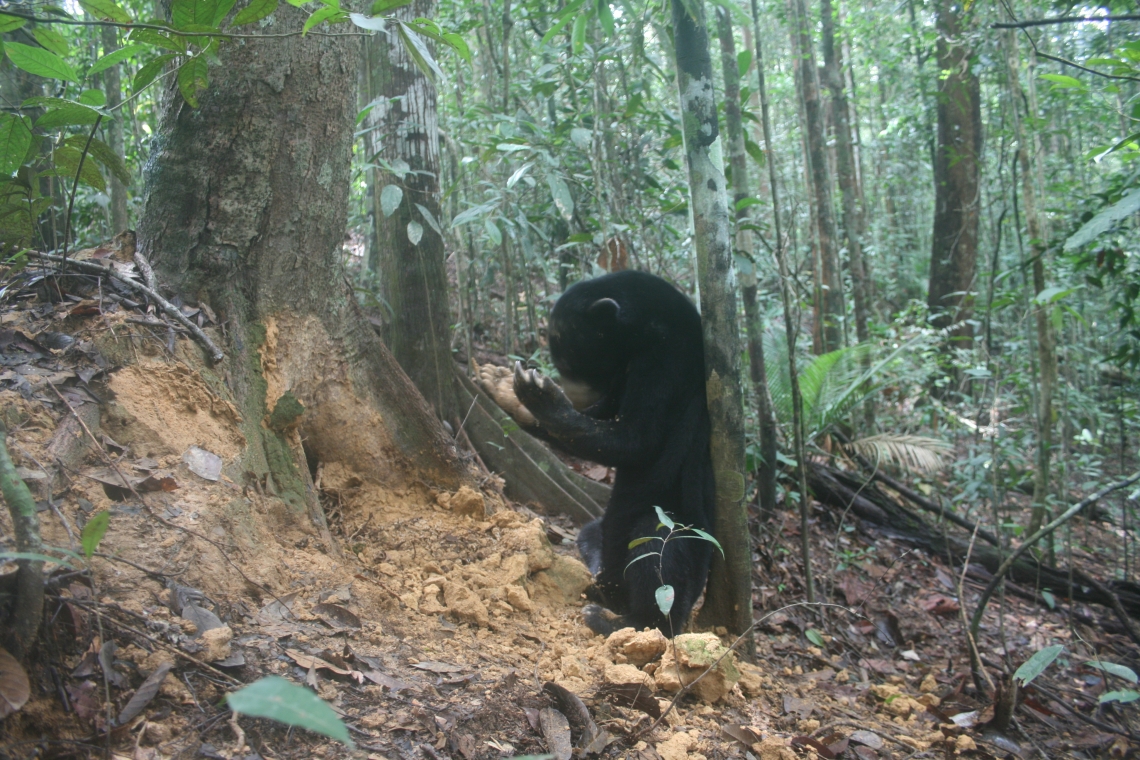
Sun bear_H malayanus_Kalimantan Indonesia_Feeding on underground termites_G Fredriksson
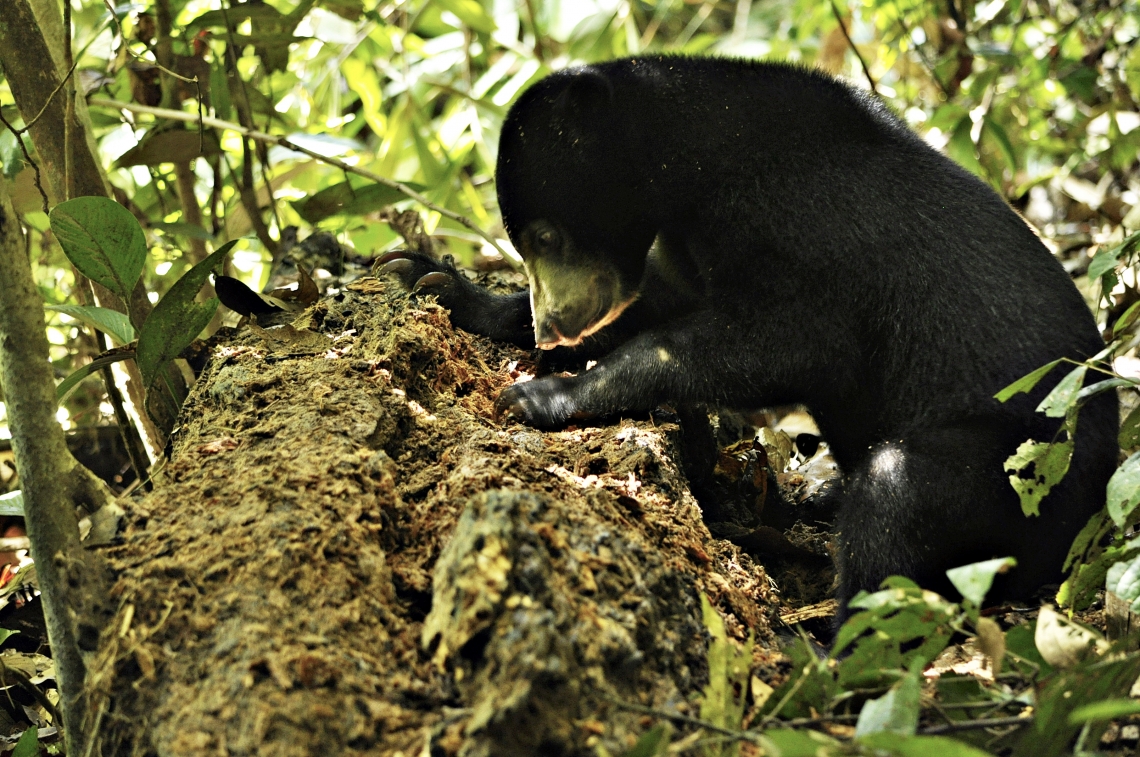
sun bear_H malayanus_Sabah Malaysia_Bornean Sun Bear Conservation Centre captive bear_digging dead log_LM Chiew

Sun bear_H malayanus_Kalimantan Indonesia_Ripping into rotten wood in search of insects_G Fredriksson

Sun bear_H malayanus_Kalimantan Indonesia_Durio dulcis favorite fruit_G Fredriksson
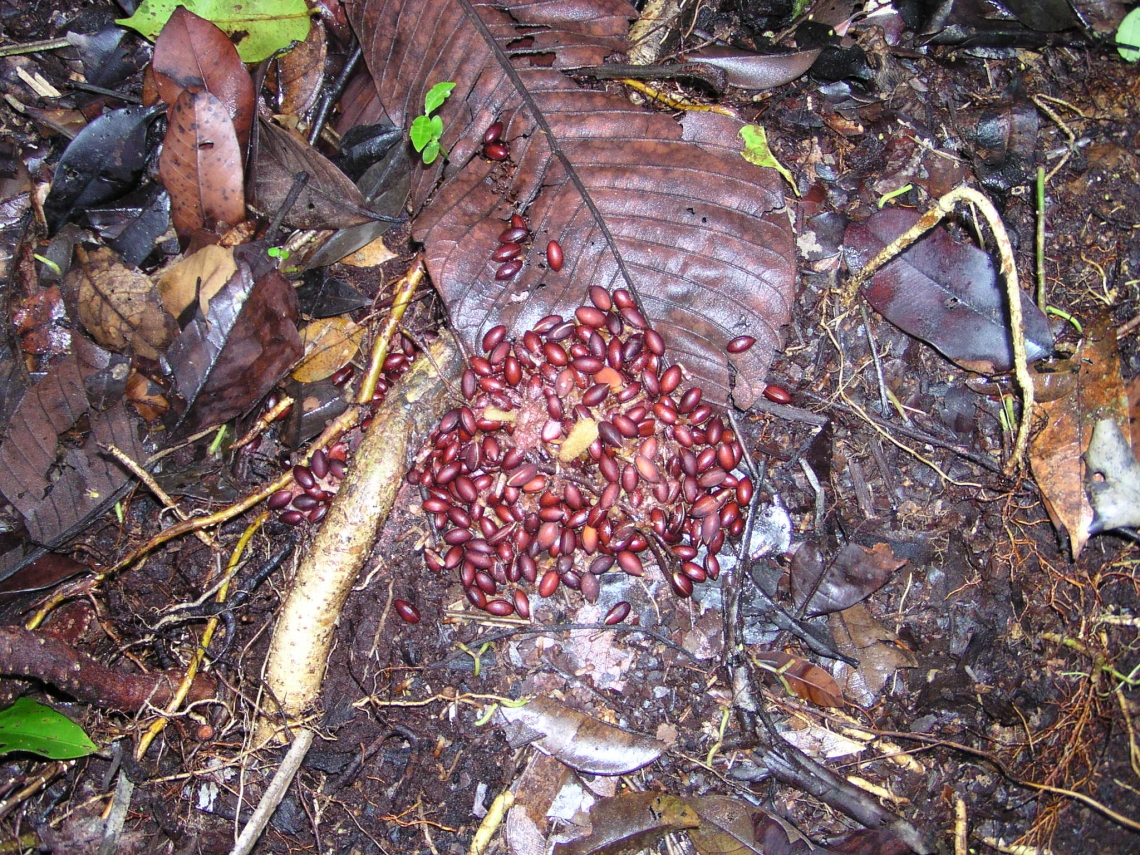
Sun bear_H malayanus_Kalimantan Indonesia_Scat with seeds from Palaquium sp._S Wich
Hibernation: There is no evidence of sun bears hibernating, presumably because of year-round food availability across their range.
Reproduction: Sun bears are polyestrous, aseasonal breeders, usually producing a single cub. Pregnancy lasts between 96 and 110 days. Female bears use cavities of either standing or fallen large hollow trees as birthing sites.
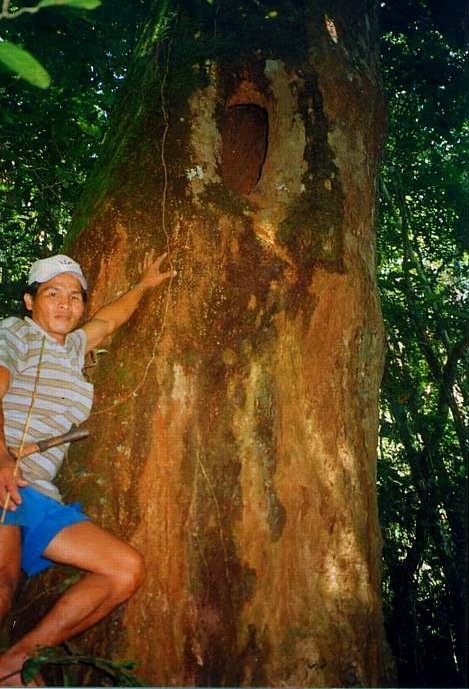
Sun bear_H malayanus_Kalimantan_Indonesia_Tree hole where wild sun bear gave birth and kept cub_G Fredriksson
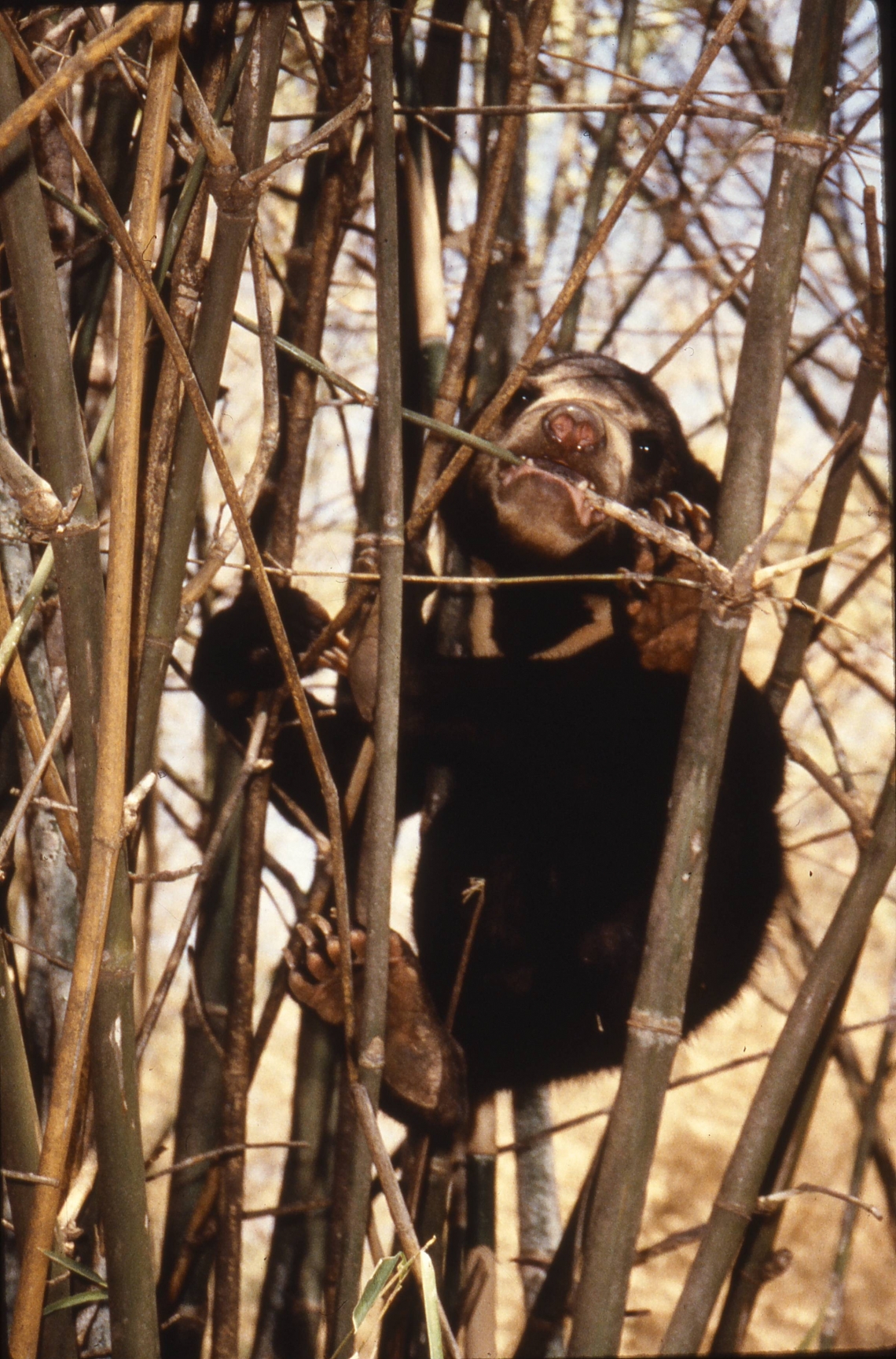
Sun bear_H malayanus_Thailand_ confiscated cub learning to climb_D Garshelis